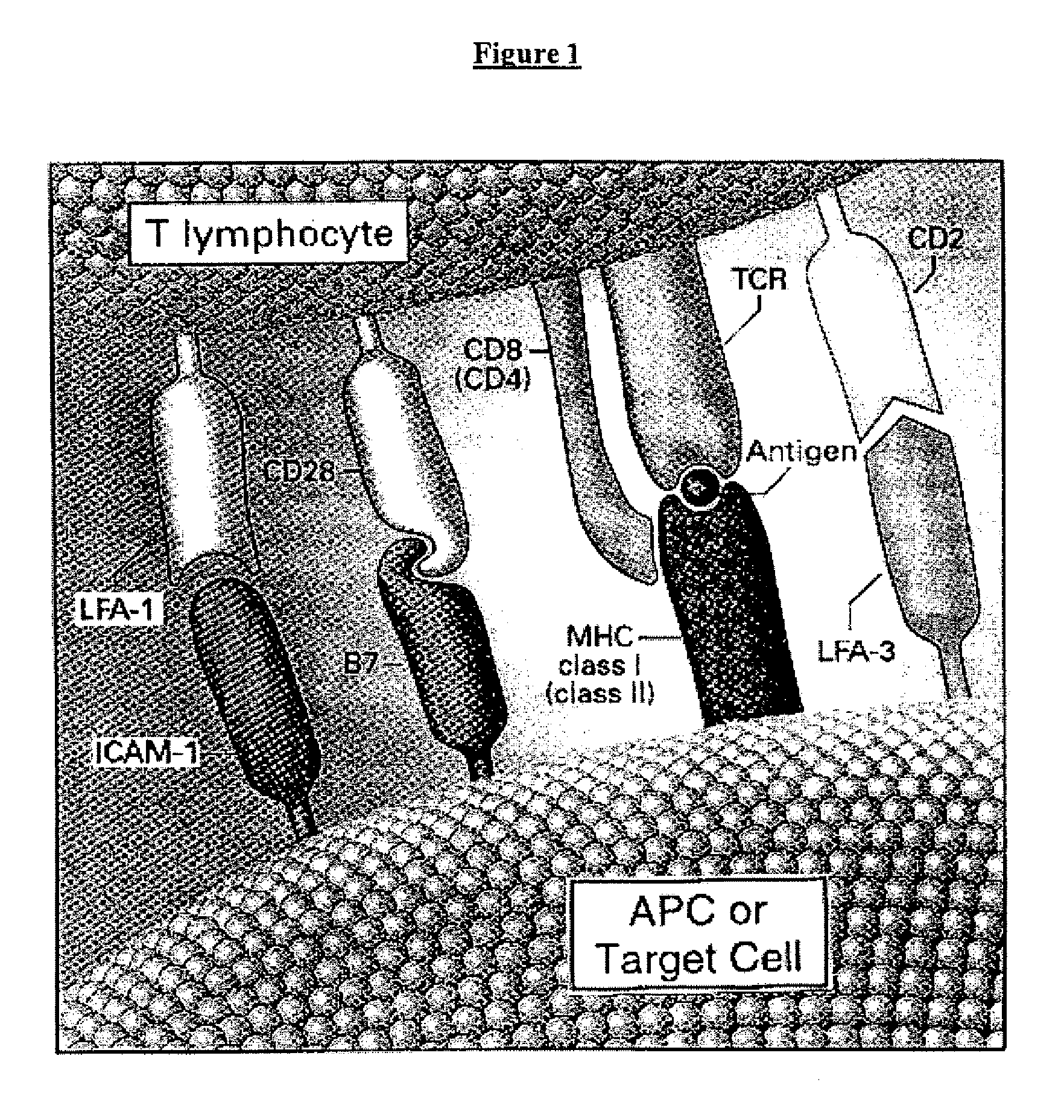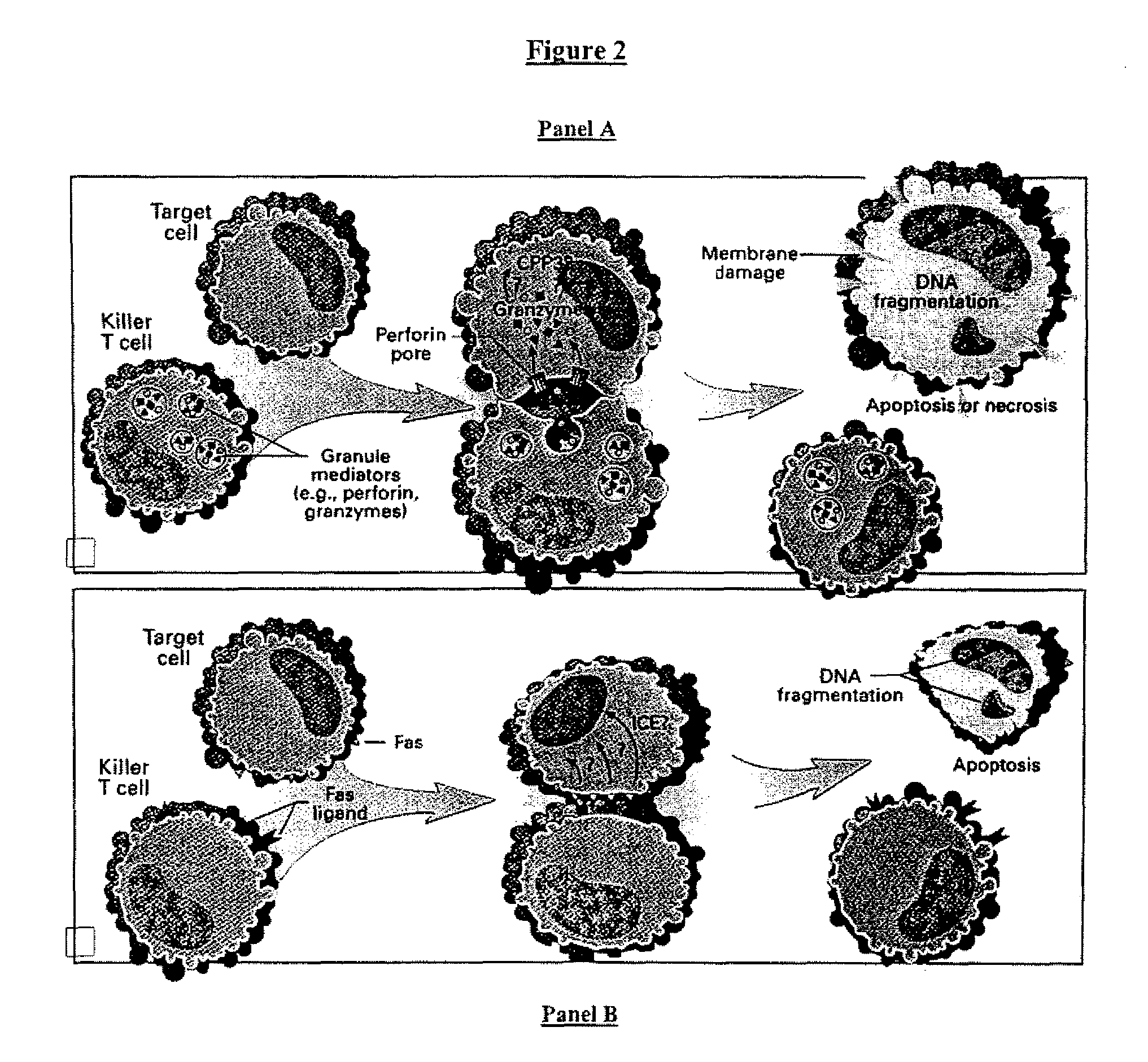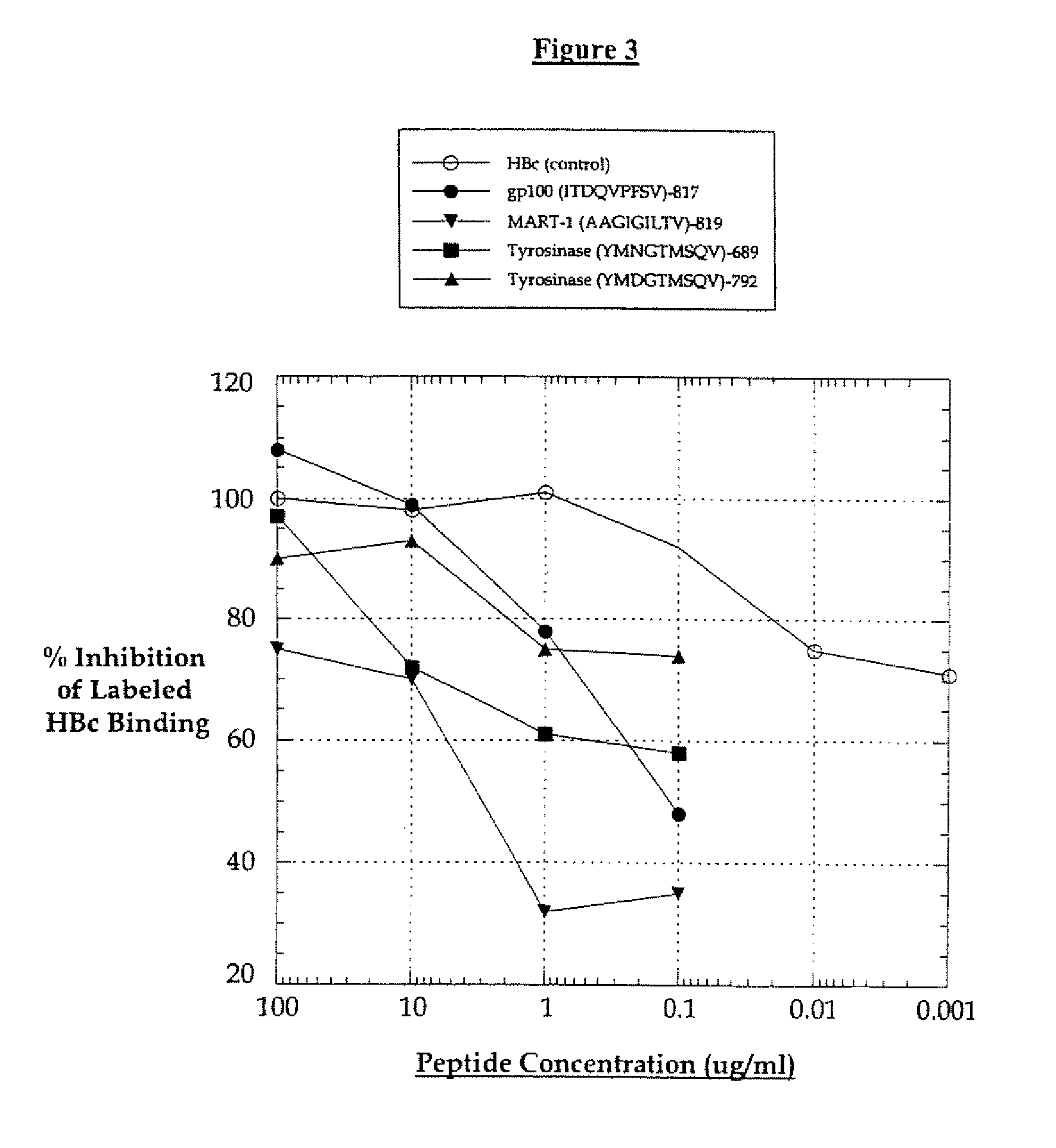Cell therapy method for the treatment of tumors
a cell therapy and tumor technology, applied in the field of tumor cell therapy, can solve the problems of the severity of the patient's treatment regime, the inability to produce a long-lasting cure, and the cancer remains a major health problem
- Summary
- Abstract
- Description
- Claims
- Application Information
AI Technical Summary
Benefits of technology
Problems solved by technology
Method used
Image
Examples
example 1
Manufacture of Drosophila Antigen-Presenting Cells
[0191]The Schneider S2 cell line was prepared from Drosophila melanogaster (Oregon-R) eggs according to published procedures and has been deposited with the American Type Culture Collection (CRL 10974). S2 cells are grown in commercial Schneiders Drosophila medium supplemented with 10% fetal bovine serum.
[0192]The pRmHa-3 plasmid vector for expressing MHC Class I and co-stimulatory proteins in 92 cells was derived from the pRmHa-1 expression vector constructed as described in the literature. It contains a metallothionein promoter, metal response consensus sequences and an alcohol dehydrogenase gene bearing a polyadenylation signal isolated from Drosophila melanogaster.
[0193]Complementary DNAs for Transfection were Prepared as Follows:
[0194]
HLA-A2.1 and β-2Reverse transcription-PCR from K562 cells usingmicroglobulin:primers derived from the published sequenceB7.1:Reverse transcription-PCR from K562 cells usingprimers derived from the...
example 2
Trial of Cytotoxic T Cell Infusions Against Melanoma
Purpose of Trial
[0209]This example teaches the effectiveness of cytotoxic T Cell infusions in the treatment of melanoma as assessed according to the following factors:[0210]1. safety and toleration of re-infused autologous CTLs after in vitro immunization;[0211]2. kinetics of infused CTLs in the systemic circulation factoring in limiting dilution analysis;[0212]3. whole body disposition of CTLs by radioscintography;[0213]4. cell composition of biopsied nodules by immunohistology (CTLs, TH, NK, B cells); and[0214]5. regression of measurable lesions and duration of response over two months.
Patient Populations
[0215]Eligibility for treatment required patients to have histologically-documented, unresectable malignant melanoma that was measurable or evaluable, and the HLA-A2 haplotype. Pretreatment evaluation included radiologic evaluation of the brain by MRI or CT scan, CT scanning of the chest and abdomen, and physical examination, esp...
example 3
Generation of HER-2 / neu Specific CTLs Capable of Lysing Breast & Ovarian Tumor Cells
[0222]We were interested in applying our CTL-generation technology to other tumor types to determine if all forms of cancer can be targeted with this approach. HER-2 / neu is a proto-oncogne with homology to EGFR that is amplified and over-expressed in many human cancers, largely adenocarcinomas of the breast, ovary and colon. It is often associated with aggressive disease and can be an indicator of a poor prognosis. It has been studied in several clinical trials as a possible target for these types of cancers.
[0223]In the early 1990's HER-2 / neu HLA-A2.1 restricted peptide epitopes were identified either by computer-assisted peptide binding algorithms or by mapping CTLs isolated from ascites of ovarian cancer patients (Table 3).
[0224]
TABLE 3HLA-A2.1-Restricted HER-2 / neu PeptidesHER-2 / neuOtherSequencePeptidesPRI #ID #Location(SEQ ID NO)Reference48-56827D113ECHLYQGCQVVDisis et al., 1994(SEQ ID NO: 13)369...
PUM
| Property | Measurement | Unit |
|---|---|---|
| affinity | aaaaa | aaaaa |
| length | aaaaa | aaaaa |
| concentration | aaaaa | aaaaa |
Abstract
Description
Claims
Application Information
 Login to View More
Login to View More - R&D
- Intellectual Property
- Life Sciences
- Materials
- Tech Scout
- Unparalleled Data Quality
- Higher Quality Content
- 60% Fewer Hallucinations
Browse by: Latest US Patents, China's latest patents, Technical Efficacy Thesaurus, Application Domain, Technology Topic, Popular Technical Reports.
© 2025 PatSnap. All rights reserved.Legal|Privacy policy|Modern Slavery Act Transparency Statement|Sitemap|About US| Contact US: help@patsnap.com



